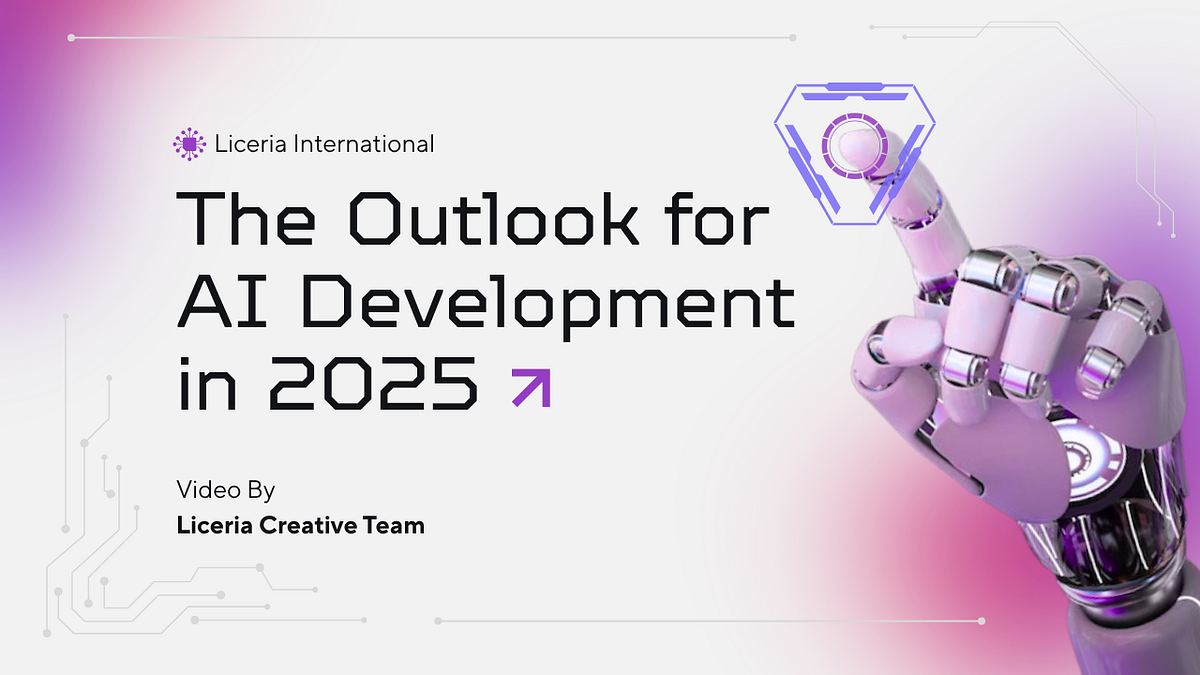Programming News
Medium
95
Image Credit: Medium
Software Architecture: Explaining KISS, DRY, YAGNI with Practical Examples in TypeScript
- This article delves into the software principles of KISS, DRY, and YAGNI, providing practical TypeScript examples to demonstrate their implementation.
- KISS simplifies logic by making it easier to read and extend, such as utilizing switch statements over conditionals.
- DRY emphasizes reducing redundancy in code to enhance maintainability and accelerate development processes.
- YAGNI advises against preemptive feature-building, advocating for developing only when necessary to prevent overengineering.
Read Full Article
5 Likes
Medium
279

Breaking Down Vulnerabilities:
- A study on the 'Universal Function Execution & Exploitation Blueprint' is in progress to explore exploitation of functions in any programming language.
- The blueprint includes components like Entry Point, Input Handling Layer, Function Call Details, Execution Environment, System-Level Flow, Output Flow, Exploitation Potential, Logging / Monitoring Layer, Testing Strategy, and Post-Exploitation Vector.
- Examples provided demonstrate the flow from User Input to Function Output/Side Effect, emphasizing exploitation potential and post-exploitation vectors.
- The study covers scenarios, such as handling user input in PHP for functions like passthru(), with potential exploits like running system commands and SQL queries for unauthorized data access.
Read Full Article
16 Likes
Dev
334

Image Credit: Dev
WWDC 2025 - Digital Identity Verification with mdocs and Digital Credentials API
- Apple introduces mobile documents (mdocs) and Digital Credentials API at WWDC 2025.
- mdocs offer selective disclosure, cryptographic security, and cross-platform compatibility for identity verification.
- Integration with Digital Credentials API in Safari and other platforms enhances online verification.
Read Full Article
20 Likes
Dev
394

Image Credit: Dev
Memory Safety Ultimate Performance Balance(1751343425871100)
- Struggling with memory safety vs. performance balance in system programming as a student.
- Discovered Rust's perfect balance through web frameworks, ensuring both safety and performance.
- Exploration of zero-cost abstractions, borrow checker wisdom in achieving memory safety.
- Future importance of safe and efficient development, mastering high-performance frameworks.
Read Full Article
23 Likes
Discover more
- Software News
- Web Design
- Devops News
- Open Source News
- Databases
- Cloud News
- Product Management News
- Operating Systems News
- Agile Methodology News
- Computer Engineering
- Startup News
- Cryptocurrency News
- Technology News
- Blockchain News
- Data Science News
- AR News
- Apple News
- Cyber Security News
- Leadership News
- Gaming News
- Automobiles News
Dev
233

Image Credit: Dev
Memory Layout Optimization(1751343146328400)
- Junior computer science student explores memory layout optimization and modern web framework design.
- Hyperlane framework in Rust offers performance, safety guarantees, and efficient memory management strategies.
- Zero-cost abstractions, compile-time guarantees, and advanced features make Hyperlane ideal for production.
- Middleware system, real-time communication, dynamic routing showcase framework's capabilities and performance optimization.
- Extensive performance analysis, benchmarking, and memory management optimization highlight framework excellence.
Read Full Article
14 Likes
Dev
241

Image Credit: Dev
System Monitoring Solutions(1751343130775500)
- Junior computer science student shares insights on Hyperlane framework and modern web development.
- Hyperlane framework in Rust offers performance, safety, and zero-cost abstractions for robust applications.
- Framework features include efficient design, memory safety, SSE support, dynamic routing, and more.
- Performance testing shows impressive results with high throughput and low latency.
- Production considerations, error handling, troubleshooting insights, and future directions discussed.
Read Full Article
14 Likes
Medium
56

Image Credit: Medium
Title: How AI Is Replacing Human Jobs: What You Must Learn Today to Survive Tomorrow
- AI is replacing human jobs at a rapid pace, with over 300,000 jobs in the U.S. and potentially 800 million globally at risk of being replaced or transformed by 2030.
- AI is now seen as a competitor rather than just a tool, impacting various sectors such as offices, restaurants, banks, and creative studios.
- The article aims to prepare individuals for the evolving job market by highlighting which jobs are being replaced, which are likely to be next, skills AI struggles to replicate, and what individuals can learn to secure their future.
- This article serves as a wake-up call to the current workforce, emphasizing the importance of adapting and learning to stay relevant in the age of AI-driven solutions.
Read Full Article
3 Likes
Dev
12

Image Credit: Dev
Performance Profiling and Tuning(1751342982250900)
- Exploration of performance development journey in modern web framework design and implementation.
- Hyperlane framework's zero-cost abstractions and compile-time guarantees for robust applications.
- Framework's use of Rust's ownership system, Context pattern, middleware architecture, and real-time communication.
- Extensive benchmarking showing exceptional performance, memory management, dynamic routing, and error handling.
- Insights on troubleshooting, memory leak prevention, and future directions in web development with Hyperlane.
Read Full Article
Like
Dev
241

Image Credit: Dev
Charm of Method Chaining Fluent Interface Patterns in Frameworks(1751342802662700)
- Junior CS student shares insights on Hyperlane framework's modern web design principles.
- Framework emphasizes zero-cost abstractions, compile-time guarantees, and flexible configuration for robust applications.
- Implementation details explore context-driven architecture, middleware system, real-time communication, and performance optimization.
- Features like SSE support, dynamic routing, error handling, and memory management set framework apart.
- Overall, Hyperlane offers performance, safety, and developer experience for cutting-edge web development.
Read Full Article
14 Likes
Dev
8

Image Credit: Dev
3330. Find the Original Typed String I
- Alice is trying to type a specific string on her computer but may press a key for too long resulting in duplicate characters.
- The task is to determine the total number of possible original strings that Alice might have intended to type.
- For each contiguous run of characters in the input string, there are L-1 possible original strings, where L is the length of the run.
- The algorithm processes each character in the string once, with a time complexity of O(n) and space complexity of O(1).
Read Full Article
Like
Logrocket
241

Image Credit: Logrocket
Leader Spotlight: Data-driven vs. human-centered decision making for product design, with Rumana Hafesjee
- Rumana Hafesjee shares insights on product leadership and the evolving role of the product executive.
- The article discusses the balance between data-driven decision making and human-centered thinking in product design.
- Rumana highlights the importance of good data for understanding users and making quick decisions.
- She also talks about the changing landscape of product management and offers advice for staying competitive.
Read Full Article
14 Likes
Dev
89

Image Credit: Dev
Architectural Decision Making Real World Web Modern(1751342382309000)
- Microservices architecture evolution from monolithic designs to modern microservices model analyzed technically.
- Core principles of microservices, architectural challenges, and framework selection for microservices explained.
- Service communication patterns, service discovery, load balancing, database patterns, and monitoring discussed.
- Circuit breaker pattern, Saga pattern for distributed transactions, and framework comparison presented.
- Modern web frameworks support microservices with high performance, resource efficiency, scalability, and developer experience.
Read Full Article
5 Likes
Python Blogs
122

Image Credit: Python Blogs
How can you implement SEO strategies for an e-store?
- SEO stands for Search Engine Optimization, making your e-store easy to find online by using keywords strategically.
- Key steps include using popular keywords, optimizing product pages with clear titles and descriptions, starting a blog, ensuring fast and mobile-friendly website, building links, using clear URLs, and continuously improving SEO strategy.
- SEO helps e-stores rank higher on search engines, increasing visibility and driving more traffic to the website.
- Implementing SEO strategies for an e-store involves keyword research, optimizing product pages, creating engaging content, improving website speed, building backlinks, and monitoring and adjusting strategies over time.
Read Full Article
7 Likes
Infoq
25

Image Credit: Infoq
Jakarta EE 11 Delivers One New Specification, 16 Updated Specifications and Modernized TCK
- Jakarta EE 11 released with 1 new spec, 16 updated specs and modernized TCK.
- Core and Web Profiles were delayed, focusing on TCK modernization to ensure compatibility.
- Jakarta EE 11 Platform designed for full Jakarta EE spec set for enterprise apps.
- Web Profile targets web app development. Core Profile for microservices, cloud runtimes.
- New Jakarta Data 1.0 spec introduced for easy database tech access.
Read Full Article
1 Like
Dev
24

Image Credit: Dev
Reactive Architecture Principles System for Elastic Scaling and Fault Recovery(1751336257184600)
- A junior computer science student shares insights on Hyperlane, a Rust-based web framework.
- Hyperlane emphasizes zero-cost abstractions, compile-time guarantees, context-driven architecture, and middleware system.
- The framework offers real-time communication, performance analysis, memory management, and advanced features.
- Benchmarking results show exceptional performance. Best practices include error handling and resilience strategies.
- Troubleshooting tips cover performance debugging, memory leak detection, and future directions for the framework.
Read Full Article
1 Like
For uninterrupted reading, download the app